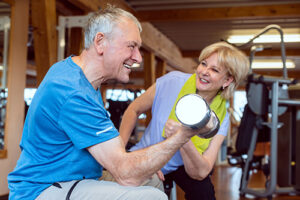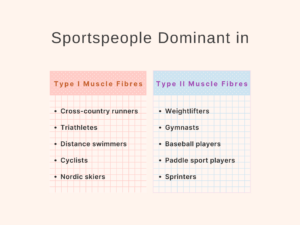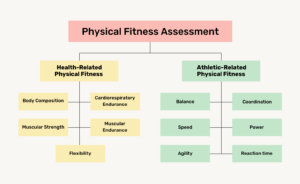What is Aerobic Exercise?
Exercise stimulates a series of metabolic responses that affect the body’s physiology, anatomy, and biochemistry. The magnitude of those metabolic responses or changes is driven primarily by whether the exercise is aerobic or anaerobic.
Aerobic means “oxygen/with air” because oxygen is required to accomplish the work demanded by your muscles during aerobic exercise. Consider how you can feel breathless when going up a flight of stairs quickly – indeed, your body is showing the need for oxygen. Aerobic exercise, also known as cardio, cardiorespiratory exercise, or aerobics, is any form of continuous exercise lasting for prolonged periods of time that uses the large muscles of the body and increases heart rate.
Your heart and blood vessels (cardiovascular system) and your lungs and air passages (respiratory system) work together during long-period physical activities to supply large working muscles and organs with the oxygen they need. Examples of aerobic exercises are such as walking, rowing, jogging, swimming, dancing, hiking, and team sports such as football, basketball, volleyball and so on. Each exercise session, as mentioned above, should last for prolonged periods of time, use large muscles of the body and increase heart rate to a moderate amount.
The oxidative pathway, also known as the oxygen system, is one of the sources of energy production in the body that uses oxygen to produce adenosine triphosphate (ATP). ATP is the source of energy for use and storage at the cellular level. And as you may guess, aerobic training is designed to stress the oxygen system in the body. It’s said that only in this pathway that fat, not carbohydrates and protein, can be used as the primary source of energy production.
Anaerobic Exercise
It’s worth mentioning that the formation of ATP without oxygen is known as anaerobic metabolism. Anaerobic metabolism consists of the ATP/CP and anaerobic glycolytic pathway, which is stressed by anaerobic training. Short-term movements at higher intensities such as lifting heavy weights and sprinting utilize ATP production from anaerobic energy pathways.
And most importantly, however, what many fail to realize is that both anaerobic systems (ATP/CP and glycolytic) are fueled and restored by the aerobic energy system. In addition, improving aerobic capacity increases work capacity for training and increases recovery between intense movements and training sessions.
Aerobic Exercise and Health
Aerobic training has a number of health benefits, including fat burning, enhancement of cardiovascular health, and improved recovery abilities. Some may fear that aerobic training results in muscle loss. But, indeed, this muscle loss is a result of an inadequate supply of calories to sustain the aerobic work rather than the aerobic exercise itself.
The general population and so-called serious exercisers tend to have an intense commitment to maximizing their physicality and lifting records. Regrettably, they discount the possibility that aerobic exercise must be a part of their training program for better health and performance. In fact, they should spend a substantial amount of time and energy on aerobic exercise to enhance their cardiovascular fitness. It seems to me that these people have only a minimal appreciation or understanding of the health benefits of aerobic exercise.
Delivering oxygen to the body and expelling the waste product from the body are the two tasks that form the functional basis of aerobic fitness. When your muscle needs oxygen, your cardiovascular (aerobic) system must be able to efficiently deliver it to them. On the other hand, your heart-lung complex must be up to the task when the waste products, for example, carbon dioxide and metabolic waste products, need to be removed. So aerobic fitness might be the most important component of one’s physical fitness.
Major Health Benefits of Aerobic Exercise
Aerobic exercise forces oxygen through the body and increases the number and size of blood vessels. Blood vessels transport oxygen and nutrients to muscles and carry waste products away for muscle growth, repair and recovery. Without an aerobic training program in a training plan, the body can’t create any new efficient supply routes for newly developed muscles.
Some major health benefits of aerobic training are as follows.
Mitochondrial Density and Aerobic Capacity
Aerobic exercise increases mitochondrial density in slow-twitch muscle fibre and develops maximum oxidative capacity in all types of fibres which results in burning fat as a source of energy production. In addition to mitochondrial density, aerobic training improves aerobic capacity and blood flow which provides benefits for the heart and lungs.
Fat Burning
Aerobic exercise increases the capacity of trained muscles to mobilize and utilize fat. Burning body fat is of substantial interest to almost everyone who spends time working out. Depending on the type of aerobic exercise and intensity, one can burn up to 1,000 calories an hour. Of course, adhering to sound nutritional principles and practices is necessary for long-term and optimal results.
Increasing Myoglobin Content
Myoglobin is an iron-protein compound in muscles. Its primary function is to store and supply oxygen to the cells in your muscles. As a result of aerobic exercise, there is an increase in myoglobin content.
Improving the Quality and Quantity of Your Life
Studies show that for every 1 hour you spend exercising aerobically, you extend your life 2 hours. So aerobic training not only improves your life quality but also improves life quantity.
Daily Available Energy and Performance
Exercise adds life to your years, as well as years to life. A well-designed aerobic training programme will give you more energy during the day to do activities you enjoy.
Relieving Depression, Stress, and Anxiety
Stress, depression and things like that are the results of a person’s lack of self-understanding. Unfortunately, you may not like to hear it, but a majority of us are second-hand. We are badly conditioned and, regrettably, not aware of that conditioning that psychologically shapes the “I”, the “self”. In other words, that conditioning is our consciousness.
However, individuals who suffer from light to moderate depression or who are anxious and have a stressful life typically experience an improvement in their condition if they exercise aerobically for 15 to 30 minutes every other day.
It’s because physical activity and exercise dissipate those hormones and chemicals that build up during periods of high stress. Proper exercise and training also generate a period of psychological and physical relaxation after an intense workout. Can you guess the reason why one feels relaxed after a vigours exercise session? You can comment below if you know the reason. I’d love to hear from you. You don’t need to Google it, of course, just pay attention and you will find it out.
Preventing Certain Types of Cancer
Research has suggested that men and women who exercise are less likely to get colon cancer. Women who do not exercise have almost twice the risk of breast cancer and two and a half times the chance of developing cancer of the reproductive system.
Enhancing Self-image
Self-image and consciousness were touched a bit above, however, those who are active and engage in aerobic exercise feel better about themselves than sedentary folks.
Reducing the risk of heart disease
There is no doubt that aerobic exercise has many health and functional benefits for the cardiovascular system. In fact, people who do not exercise and are sedentary are twice as likely to develop heart disease as those who do regular aerobic exercise.
Increasing Good Cholesterol
Another benefit of aerobic exercise is increasing HDL (high-density lipoprotein) cholesterol, which is known as “good” cholesterol. This is the type of cholesterol that lowers the risk of heart disease.
Ageing Processing
There is a high possibility of a decrease in work and physical activity as we get older. So by counterbalancing age-related declines in work capacity and physical performance, aerobic exercise can help you maintain your ability to work and be independent.
Sleep Quality
Due to the many physiological responses and physical stress a proper training plan has on the body, exercisers not only go to sleep more quickly but also have a good sleep and feel refreshed.
You know that a good night’s sleep plays a crucial role in one’s daily mental and physical activities. Generally speaking, your sleep duration depends on the amount of physical, physiological, and psychological stress you have during the day. So the duration can be different from person to person based on the physical and mental stress they have during the day. And if I’m not mistaken, it’s not true that everyone needs 8 hours of sleep every night.
Improving Mental Sharpness
People who exercise on a regular basis have better memories, reaction times and a better level of learning curve and concentration than those who are not active and don’t exercise regularly.
The Bottom Line
If one grasps a basic understanding of the physiological responses of exercise in the body, one knows that there are many health benefits beyond the things mentioned in this post.
So if you want to get aerobically fit – and you should – you need to learn the rules for developing aerobic fitness and make them an integral part of your conditioning routine.
Meanwhile, you shouldn’t think of aerobic exercise as the best or the only type of exercise to burn fat and/or to improve health and performance. For better performance, body composition and health, one should also eat well and stress the anaerobic system appropriately through weight training and other types of anaerobic exercises. And altogether, as long as there is no psychological pain and any metabolic problems, one can function at his or her best performance physically and mentally.
Comment below if you have any questions. I’d reach out as soon as possible.





